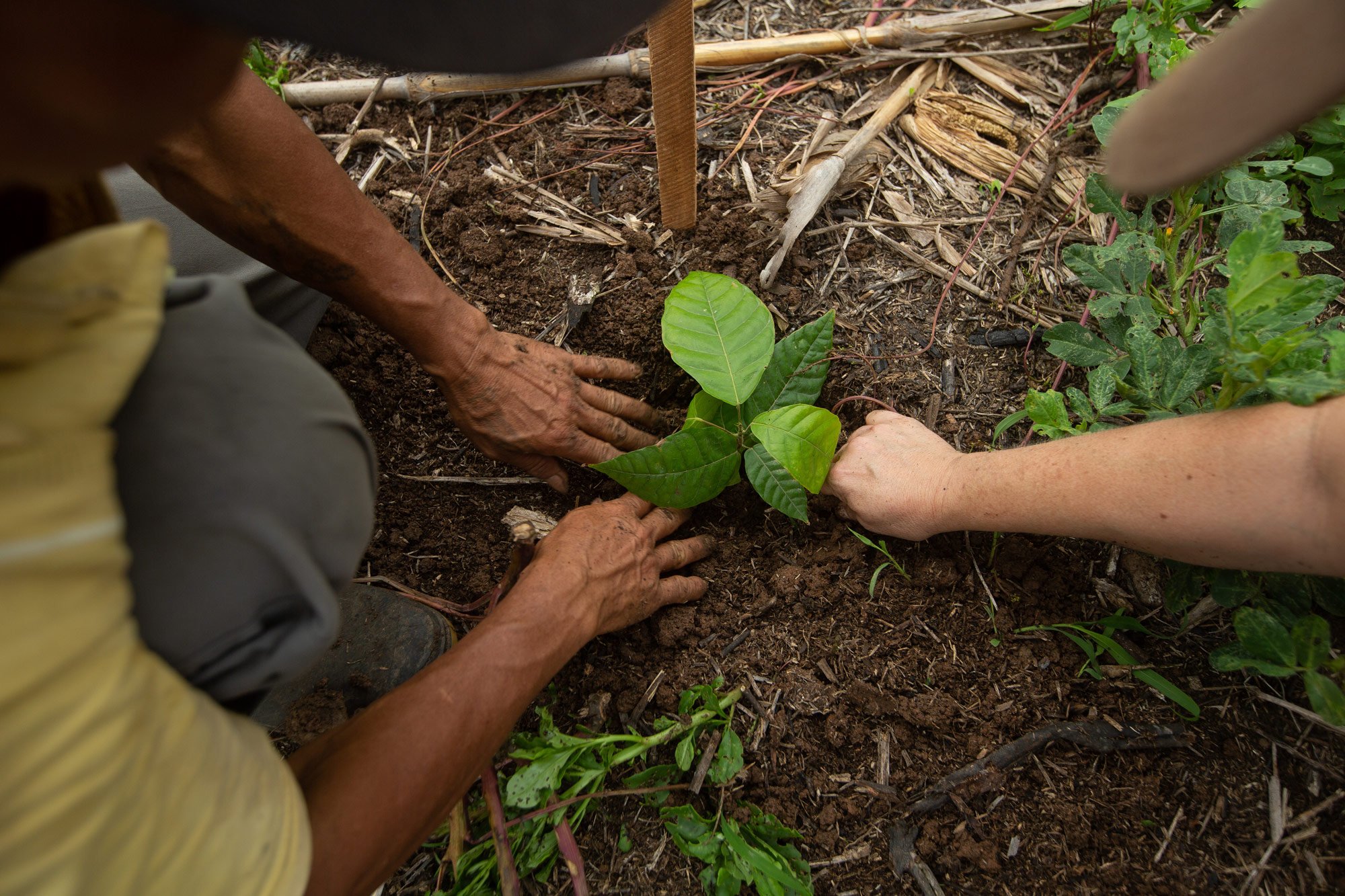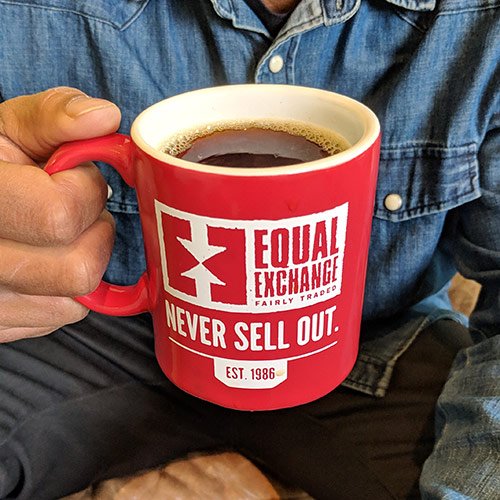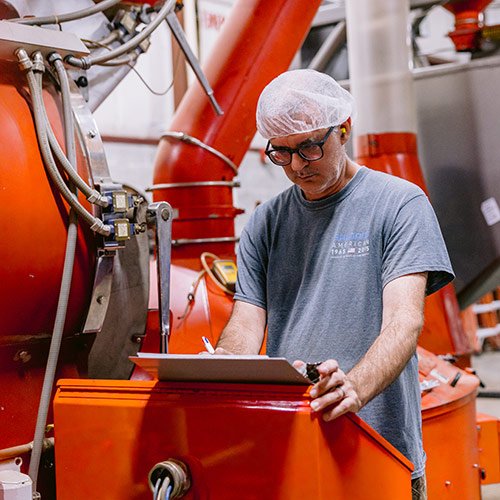Reflections From Rink: The History of Our Alternative Capital Model
By Rink Dickinson, Equal Exchange Co-Founder and President
As we enter a new stage of Equal Exchange expanding our capital model, I wanted to share a few reflections on the history of our capital model and its central role in our success in building an actual alternative economic model.
Our capital model reflects much of the vision of the founders
Jonathan, Michael, and I were coming from a fairly idealistic place when we founded Equal Exchange. The organization we built, especially the Equal Exchange capital model, is quite radical, influenced by local farmers, co-ops, cooperative economic models, and alternative trade.
Underneath this was a shared perception that the world system was tremendously off-base and unjust. There was no way to make sense of the wealth of the advanced economic world (the core) and the extreme destitution of the global south (the periphery). We felt that the same market system that limited the so-called choices of peasant coffee farmers in Nicaragua, Peru, or Mexico was also very much at play for potato growers in Maine or dairy farmers in Vermont or Wisconsin.
Our common experience was working at NEFCO/Northeast Co-ops, a co-op distributor to consumer food co-ops based in New England. Because this was early in the development of natural and organic foods, and because food co-ops were growing, we were part of an organization that was growing and succeeding, sometimes despite our organization's anti-business culture.
After a couple of attempts to have NEFCO work on international cooperative trade, it became clear that we would need to create another organization to take what, at the time, seemed like a crazy risk. Ironically, NEFCO was sold under duress more than twenty years ago, and Equal Exchange is still relatively strong and independent.
Capital: From whom, and on what terms?
Equal Exchange founders and staff in 1991
We wanted to start an enterprise from scratch. Our co-op work taught us something about buying, selling, and distributing. We believed that there was a chance to bring in coffee from Nicaragua because our co-op warehouse was doing that through another ATO importer. But we needed money for inventory, salaries, rent, and start-up costs.
We followed the thinking of the ICA Group, which was advancing the concepts of the Mondragon Co-op from Spain here in the US. Workers could rent capital on their own terms and own the enterprise, as opposed to the prevailing capitalist model. Workers could democratically own their enterprises on a one-member, one-vote basis.
We basically paired one unconventional idea (being an alternative trade organization) with another being a worker co-op renting capital from investors while keeping all control with workers. With Michael doing the lion’s share of the capital raising, which was quite a feat, we raised $100,000 of equity. This capital, given on solidarity terms (no capital upside, no voting control, no charitable tax break), came from friends, family, and supporters. What was unclear was whether there could be more money after this first round.
Thanks to this first raise, we had the money for inventory, rent, salaries, and operating losses. In year one, an eight-month year, we had sales of $113,000 and losses of $31,700. There are many ways to think about those numbers and those ratios. On the one hand, our capital base was fairly similar to our sales, so we could say we were well-capitalized. On the other hand, our losses were a huge percentage of our sales, so we were capitalized but with terrible economics. And still, underneath this, we were trying to prove that fair trade/alternative trade could work and that worker co-ops could work.
Strong management and worker-owner responsibility
Two other cultural beliefs were foundational and remain core to our DNA. One was strong management, and the other was worker-owner responsibility.
Strong management meant that management at the CEO level, but hopefully at every level, was empowered to make decisions and make mistakes. This was a direct result of some of what we had experienced and observed in our early co-op history, which often was characterized by a lack of risk-taking, slow/inconclusive decision-making, and, most importantly, a culture of criticism and fear of mistakes. We were not trying to avoid mistakes, we were trying to avoid massive mistakes by learning and trying and often failing, hopefully leading to more learning.
Worker-owner responsibility is best seen financially in our very strong culture of controlling expenses. All of our financials are accessible on our website, but worker-owners see and own the expenses on a much more micro/real-time level. Equal Exchange is our organization, and our economic performance is tied to our success and our livelihoods. Worker-owner responsibility is also seen in the deep caring and concern we all have for each other.
Both of these concepts are complex and multi-dimensional. The point here is not to ignore hard issues around leadership, ownership, economics, and democracy but to communicate some core elements of qualified success that have led to Equal Exchange’s survival and success as a worker-owned co-op ATO.
Left to right: Jonathan Rosenthal, Michael Rozyne, Clark Arrington, Rob Everts, and Rink Dickinson reminisce at an Equal Exchange gathering in 2020.
The next capital challenges
Equal Exchange has succeeded with a radical redistributive and democratic capital model. But we did that through a combination of factors, including commitment, great workers and staff, foundational co-op and interfaith support, strong management, and a good dose of luck. Our capital model appears less radical today because our economics are healthy. Our success in renting capital in service of democratically organized workers is now being followed and influencing others as the interest in worker co-ops is much greater today than at any time in our history.
We are unique in being an ATO and worker co-op based on a consumer product brand. Because our capital model is based on renting capital from investors who have means, for the most part, there are not enough investors to interact with and energize our consumer brand, which is critical to our success in the consolidating market.
Because of this, in the last eighteen months, we have been actively looking for a capital/investor program to operate alongside our existing program, with the goal of involving thousands of individuals regardless of their financial circumstances. As we continue to build our radical fairness model, we need more participation from citizen-consumers and citizen-investors to secure our success and support our farmer partners. This commitment to economic participation and inclusivity, regardless of degree of wealth, led us to Crowdfund Mainstreet. Through a new federal regulation, we can include more people in our alternative capital model through crowdfunding. This means we can fund our business with the support of our own network and democratize another aspect of our model.
Anyone interested in learning more or becoming an Equal Exchange investor, please visit our Invest page.








